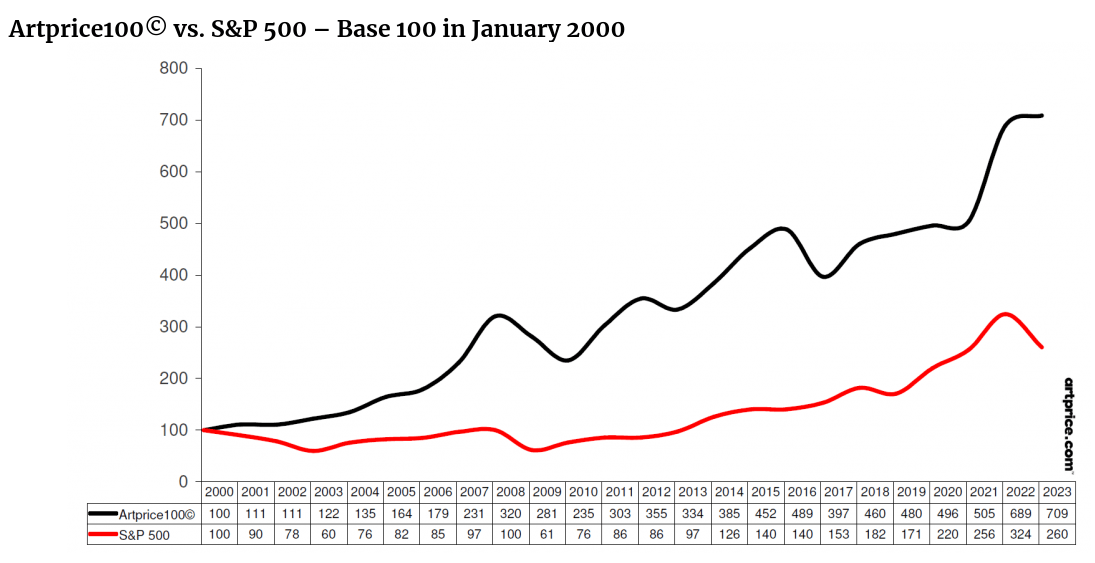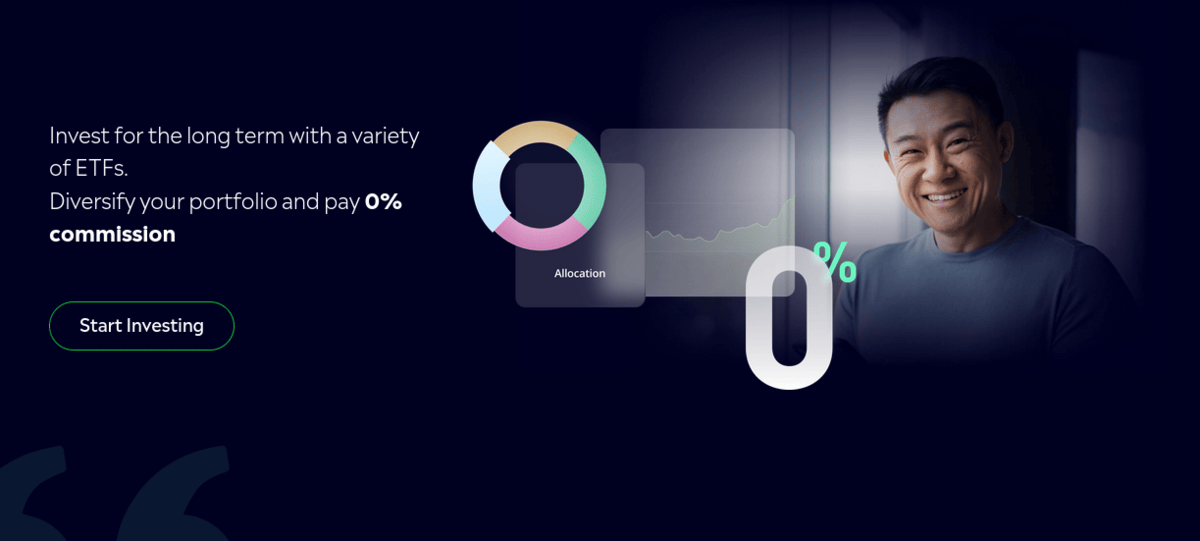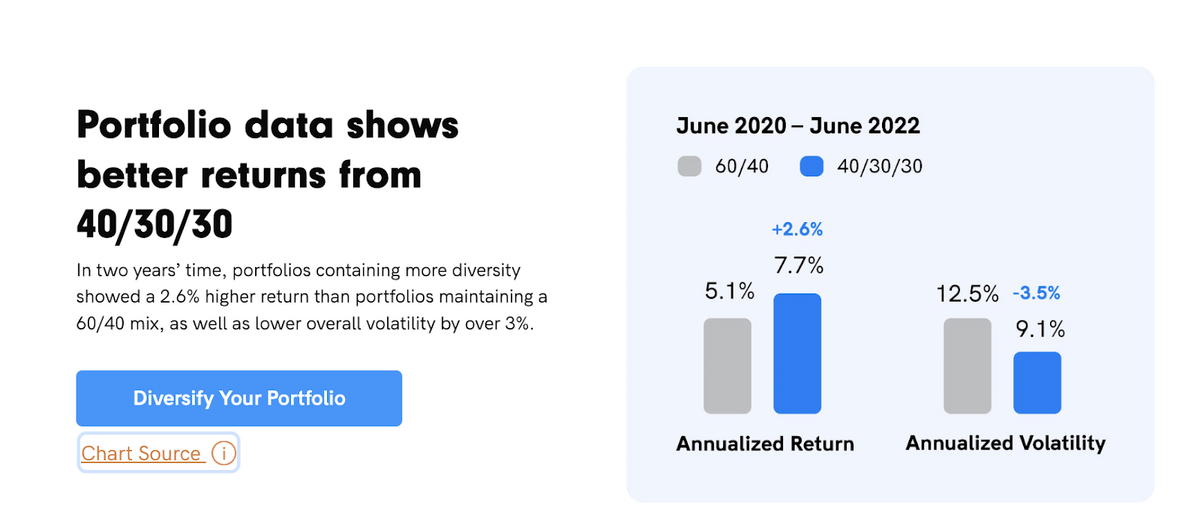Economist Paul Samuelson once said, “Investing should be more like watching paint dry or watching grass grow. If you want excitement, take $800 and go to Las Vegas.”
The idea? If you’re interested in investing, ditch the “get rich quick” mentality. Instead, adopt a long-term mindset and select investments that you believe will pay off over months and years — not right away.
This approach might be boring in the short term, but over time, it’s possible to grow your money exponentially — if you choose intelligent investments.
That leads to the next big question: What are the best long term investments? While the answer(s) will be different for everyone, the below list focuses on a variety of investments that have historically performed well over the long term.
Keep reading for 10 high-quality ideas for how to invest in the long term, including the best long term stock investments, alternative assets, and more.
The Bottom Line: Best Long Term Investments in 2025
There’s no single best long-term investment. Rather, the “best” investments are the ones that match your goals, risk tolerance, and investing style. What you invest in and how you curate your portfolio is up to you.
That said, certain investment vehicles have historically performed well over the long term, including stocks, index funds, select alternative investments, and more. Below, you’ll find our complete list of some of the best long term investments in 2025.
10 Best Long Term Investments
Let’s dig in. Here are 10 of the best long term investments to consider:
1. Art + Collectibles
You probably thought we’d start the list with stocks, didn’t you? Nope. Since we’re talking about the best long term investments, art + collectibles warrant top billing on this list. Take a look at the chart below to understand why…

If you look at the Artprice100 index, you can see that over the past 23 years, blue-chip art (What’s blue-chip art? Find out more here) has gained significantly more than the S&P 500. The takeaway? Over the long term, art can potentially be a great, possibly even stock-market beating, investment.
But there’s a catch: Art investing can be expensive. Case in point: A Monet painting recently sold for over $70 million.
Here’s the good news. Thanks to Masterworks, you can invest in shares of blue-chip art. And it’s available to all investors — not just accredited investors.
Once your account is approved, you can start browsing potential investments right away. You can both deposit funds and trade with a Templum brokerage account (a platform that specializes in trading alternative assets).
In addition to investing in new paintings in the primary market, you can trade on the secondary market with other art investors.
The way the platform works is pretty cool:
- Masterworks owns 100+ pieces of fine art from blue-chip artists.
- The platform handles the lion’s share of the work: acquisition, storage, insurance, and selling of the art pieces. It also distributes the profits (net of fees) to investors if the artwork is sold for a profit.
- Masterworks’ focus is contemporary (Post-WW2) art, which it believes has the most price appreciation potential.
- Masterworks publishes past sales in a price database, so you can see the real-world performance of past art investments. (Of course, past performance is not an indication of future performance, but it’s still interesting to see.)
Worth noting — while Masterworks doesn’t require accreditation, it does currently have a waitlist. But we’ve got the hook up: Use this link to skip the waitlist.
2. Stocks
Now let’s move on to stocks. You probably already know that stocks have the potential to be a good investment. But there are a lot of stocks out there, and a lot of ways to approach investing in them.
So what kinds of stocks are suitable for long-term investing? Here are two directions to consider for the best long term stock investments:
Need help finding stocks to invest in? Consider FINQ.
FINQ is a financial platform designed to help investors with stocks insights for smarter investing decisions. By offering daily updated stocks ranking of the 500 stocks in the S&Ps, FINQ is cutting through the noise providing clear insights of stocks attractiveness. Making it easier for both beginner and experienced investors to make informed decisions with confidence. Try FINQ for FREE today.
Blue-Chip Stocks: The term “blue chip stocks” is derived from poker, where the most valuable chip used to place bets is usually blue. Blue-chip stocks are big, solid, well-trusted companies that have proven themselves over the years. Here are some examples of blue-chip stocks:
- Coca-Cola Co. (NYSE: KO)
- Costco Wholesale Corp. (NASDAQ: COST)
- Microsoft Corp. (NASDAQ: MSFT)
- Walmart Inc. (NYSE: WMT)
While these stocks will rarely experience massive price spikes, they tend to enjoy slow but steady growth over time.
Dividend Stocks: Sometimes, blue chip stocks are also dividend stocks, but not always.
So-called “dividend stocks” are stocks that pay dividends, or a distribution of the company’s earnings to shareholders.
Typically, the company’s board of directors decides on the dividend yield and frequency. For instance, at writing, McDonald’s Corp. (NYSE: MCD) offers a 2.26% dividend yield.
While dividends are typically not significant on a quarterly or yearly basis, they can add up over time. When reinvested, they can slowly grow your investment in a stock over time, so that your income and exposure can grow along with the company.
For more information, check out our post The Best Way to Build a Dividend Portfolio in 2025.
Looking for dividend stocks? Check out WallStreetZen’s Best Dividend Stocks to Buy Now screener.
To expand your stock market knowledge, consider subscribing to our FREE newsletter, WallStreetZen Ideas.
And of course, if you’re interested in trading stocks, you’ll need a brokerage account. One of our top picks? eToro.
On the platform, you can choose from thousands of stocks from the top U.S. companies, and you can even purchase fractional shares. eToro also supports other investment vehicles such as ETFs and crypto, allowing you to diversify your portfolio.
eToro is a multi-asset platform which offers both investing in stocks and cryptoassets, as well as trading CFDs. Please note that CFDs are complex instruments and come with a high risk of losing money rapidly due to leverage. 51% of retail investor accounts lose money when trading CFDs with this provider. You should consider whether you understand how CFDs work, and whether you can afford to take the high risk of losing your money. This communication is intended for information and educational purposes only and should not be considered investment advice or investment recommendation. Past performance is not an indication of future results. Copy Trading does not amount to investment advice. The value of your investments may go up or down. Your capital is at risk. Cryptoasset investing is highly volatile and unregulated in some EU countries. No consumer protection. Tax on profits may apply. Don’t invest unless you’re prepared to lose all the money you invest. This is a high-risk investment and you should not expect to be protected if something goes wrong. Take 2 mins to learn more eToro USA LLC does not offer CFDs and makes no representation and assumes no liability as to the accuracy or completeness of the content of this publication, which has been prepared by our partner utilizing publicly available non-entity specific information about eToro.
3. Funds
Funds are one of the best long term investments if you want to diversify but also keep things simple. Here are two types of funds to consider:
ETFs
Exchange Traded Funds (ETFs) are groupings of stocks listed under a single ticker. Often, they track an index, commodity, or a basket of assets.
For example, the Vanguard Total Stock Market ETF (NYSEARCA: VTI) is a popular ETF that seeks to track the performance of the CRSP U.S. Total Market Index, and includes large, mid-and small-cap equities.
The nice thing about ETFs is that they make diversification simple, which makes them a popular choice for new investors who want to invest long-term but might not have the knowledge (or desire) to choose individual stocks.
eToro is one of our favorite platforms for ETF investing. Not only is the platform intuitive and user-friendly, but you can invest in ETFs with zero commissions.
eToro is a multi-asset investment platform. The value of your investments may go up or down. Your capital is at risk.
Mutual Funds
Mutual funds are another popular type of fund. They’re similar to ETFs, but with a few crucial differences. For one, mutual funds are purchased from the fund’s manager — not on an exchange, as with ETFs. Mutual funds are only traded once per day, unlike ETFs, which can be traded continuously through stock market hours.
One of the complaints about mutual funds is that they often have active management fees, which can make them pricier than ETFs. What are you paying for?
Ostensibly, the manager’s expertise, and the fact that the fund is more actively managed than an ETF. For some, these factors can make the fees worth it.
If you’re interested in mutual funds, you’ll have to select a brokerage that offers them. Most “legacy” brokers like Schwab and Fidelity offer mutual funds. We like Interactive Brokers, which offers mutual fund trading in stocks, bonds, ETFs, crypto, and options.
4. Private Credit
Here’s another entry that might surprise you: Private credit. Why is it one of the best long term investments?
Consider this: Recently, investment giant KKR conducted a study examining the benefits of adding alternative investments into the traditional “60/40” portfolio over almost a century of returns.
They found that a 40/30/30 portfolio (including real estate, infrastructure, and private credit assets) offered both higher returns — with lower volatility — even during periods of high inflation.
Up until recently, private credit was only available to an elite population of well-connected individuals and institutions. Platforms like Percent are changing that.
On the Percent platform, accredited investors can gain exposure to multiple credit notes across different asset classes and geographies — all in a single investment. Read our Percent review here.
If you’re not accredited, you can also gain access to private credit investing through Fundrise, where you can invest in real estate debt in addition to a variety of other funds. Read our Fundrise review here.
But before you invest in private credit, consider this: There are credit and liquidity risks. So be sure to do your due diligence before investing.
Note: We earn a commission for this endorsement of Fundrise.
5. Automated Investing
If your attitude toward investing is “set and forget,” then automated investing or a roboadvisor is one of the best long term investments for you.
Automated investing is just what it sounds like: Investing where the process is automated, with fees that are typically far lower than the costs associated with traditional financial advisors. One of our favorite platforms for automated investing? Acorns. It’s worth checking out right now, because you can get a $20 bonus when you set up your first recurring investment:

With Acorns, you can set up an account, take a short quiz about your risk tolerance and long-term objectives, and the platform will automatically allocate and deploy your funds based on your responses.
You can easily set up an auto-invest plan, and you can even take advantage of the “Round Ups” feature, where your purchases will be rounded up to the nearest dollar, and the “rounded up” small change will be added to your investment account.
6. Real Estate
According to millionaires, real estate is one of the best long term investments out there. Why?
For one, price appreciation. Consider this: According to the Federal Housing Finance Agency, between April 2021 and April 2022, home values in the U.S. rose by an average of 18.8%. Using that math, a house purchased for $500,000 in 2021 would have been worth $94,000 more just a year later. Not bad.
Of course, that was a crazy time in the housing market; since 2000, the average rate has been 4.7%.
Another reason real estate is one of the best long term investments? It doesn’t move precisely in tandem with the stock market, so it can help you diversify during downturns in the market.
Interested in becoming a real estate investor? A course like Skillshare’s “Excel in Real Estate Investing” can give you the knowledge and skills you need, like how to find and value properties, to take the next step.
Of course, not everyone has the funds to start buying up houses or buildings. If you want a less-direct way to invest in real estate, you might consider Fundrise.
We already talked about private credit investing on Fundrise, but you can also invest in real estate funds, which gives you diversified exposure without a big investment.
(Another platform to consider? Arrived, which offers investors access to fractional real estate investing in residential properties. See our Arrived review here.)
Note: We earn a commission for this endorsement of Fundrise.
7. Retirement
One of the best long term investments? Investing in your future by funding your retirement account(s).
If you have a 401(k), it’s worth it to contribute as much as you can — especially if your employer will match your contributions.
The contributions are made pre-tax, which means you won’t have to pay the IRS until you withdraw. This means you can collect compounding interest for years or even decades before you have to pay the tax man.
Plus, 401(k) contributions don’t count toward taxable income, which can save you money in the short term, too.
If you don’t have a 401(k), you still have options, like an IRA — either a traditional (pre-tax) or Roth IRA (post-tax) account.
One of our favorite retirement account providers? M1 Finance offers both traditional and Roth IRAs and gives you the option to automate investing so you can focus on other things in the near term.
For more about retirement strategies, check out our post, “12 Best Retirement Strategies + Options in 2025”
8. Bonds
Bonds are often seen as one of the best long term investments because they tend to hold their value, even during times of recession.
In fact, bonds have historically performed better than stocks or cash during recessions. The bottom line? Bonds can offset stock market losses over time and help you diversify.
When it comes to bonds, you can invest in a few ways. For example, if you want bonds backed by the U.S. government, you can invest in treasury bonds from the U.S.
Treasury website. If you prefer corporate bonds or bond ETFs (ETFs that exclusively invest in bonds), many brokerages have offerings that you can browse. For a one-stop shop for bond investing, I highly recommend Public.com — you can both invest in individual bonds (corporate or government issue) or invest in a Bond Account, where a portfolio of bonds is chosen for you. Read more about Public.com’s bond account in our Public.com review.
9. Cash Equivalents
No, we’re not talking about stuffing cash under your mattress. We’re talking about investing your cash. Cash equivalents are highly liquid investments that can be easily converted into cash. Here are just a few to consider:
CDs
CDs, short for Certificates of Deposit, are savings accounts that pay a fixed interest rate for a fixed period of time. Right now is a very appealing time to invest in CDs, because rates remain quite high.
CDs are safe because they’re FDIC-insured and low-maintenance, which makes them one of the best long-term investments for risk-averse investors.
Our favorite spot to search for CDs? CIT Bank offers a variety of CD terms, anywhere between a few months and a few years, and some of the most competitive rates out there.
High-Yield Savings Accounts
High-yield savings accounts are precisely what they sound like: Savings accounts with a higher yield than most traditional big-bank savings accounts. If you have a significant chunk of money in a bank account with a 0.01% yield, you’ll want to switch to a HYSA right away.
The HYSA offered by CIT Bank currently offers up to 4.35% APY for accounts over $5,000. (You can open an account with just $100, but the yield will be lower.)
This is one of the best long term investments for new investors because it really doesn’t require any work on your part, and the risk is minimal. You can simply put your money in your account and collect interest monthly.
10. Pay Off Debt
The “return” you get from paying off debt — particularly high-interest debt — can be significant.
For example, if you have debt with an interest rate of 10%, in essence, you’ll earn a 10% return by simply paying it off.
This applies to credit card debt, auto loans, personal loans, or any debt that has a high rate. If you don’t pay it off — or at least pay it down — the debt can compound over time, keeping you in debt.
Feel like you need help figuring out a budget that allows you to pay down your debt? Empower’s free dashboard, which is loaded with tools that can help you create a budget and manage your money, like a free Investment Check Up tool and Budget Planner.
Empower also offers wealth management if you want to go that direction, so if you’re impressed by the free tools, you can upgrade later.
Final Word: Best Long Term Investments
There you have it: 10 of the best long term investments.
While there isn’t a single “best” investment, the vehicles and platforms listed in this post are a great starting point in building a long-term, diversified portfolio. The allocation and investments you make are up to you — take the time to consider your goals and risk tolerance and always do your due diligence before investing.
FAQs:
Which investment is best for the long term?
The best long term investment depends on factors such as your goals and risk tolerance. For beginners, cash equivalent accounts such as a high-yield savings account or CDs are often a good way to test the waters of long-term investing. Investing in a stock market fund is also considered a good investment that has historically paid off in the long term.
What is the safest investment with the highest return?
The safest investment with the highest return may look a little bit different for every investor simply because everyone’s risk tolerance and definition of “safe” is different. Some investments that people consider “safer” are CDs, real estate, and index funds.
Where can I get 10 percent return on investment?
Returns are never guaranteed with investing. However, investment vehicles that have historically yielded a 10% return or more include art and collectibles and stock market index funds.
Where to Invest $1,000 Right Now?
Did you know that stocks rated as "Buy" by the Top Analysts in WallStreetZen's database beat the S&P500 by 98.4% last year?
Our April report reveals the 3 "Strong Buy" stocks that market-beating analysts predict will outperform over the next year.













